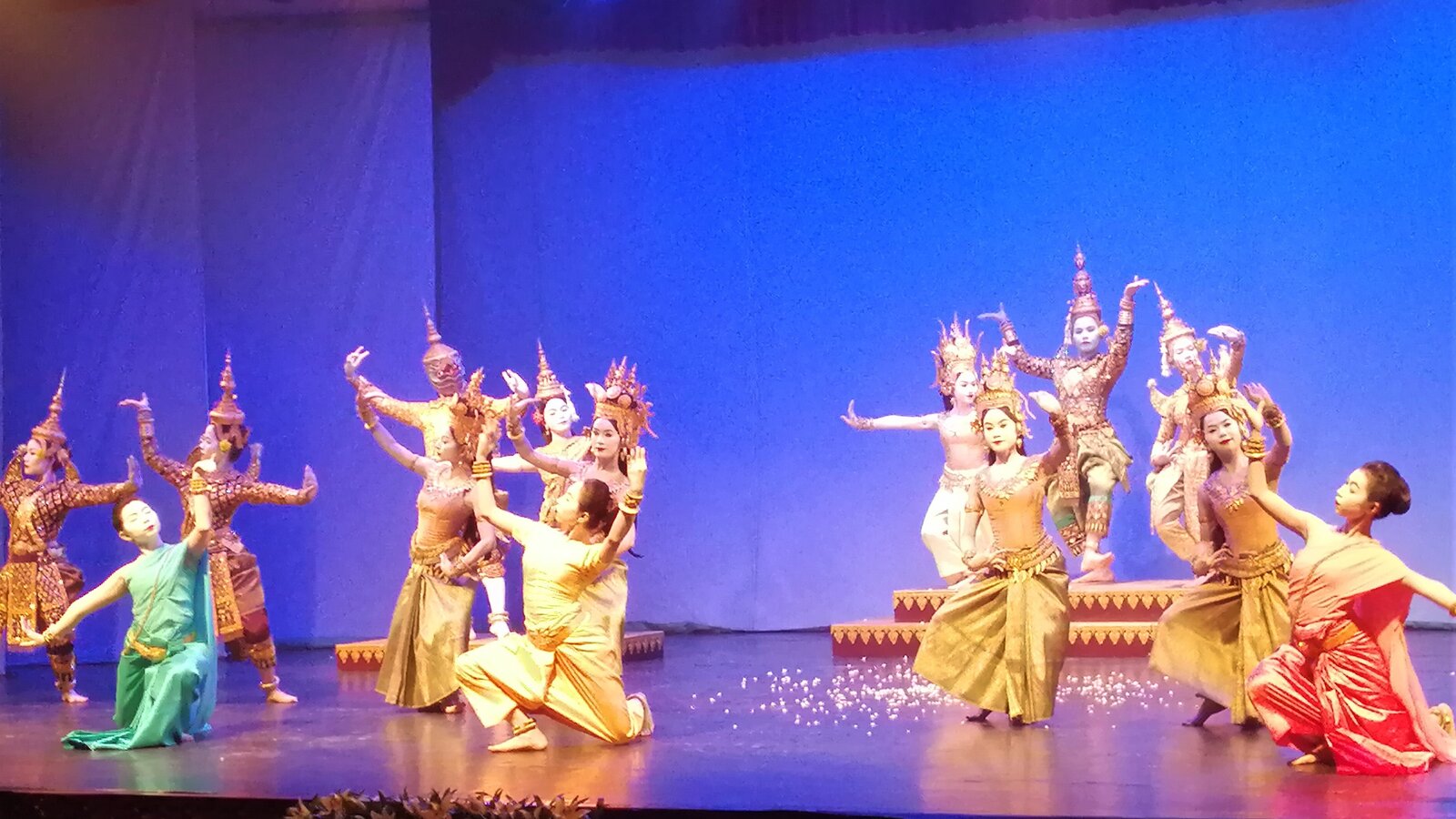
More than a century ago, famous sculptor and painter Auguste Rodin was struck by the gracefulness of The Royal Ballet of Cambodia's dancers, when they performed for the first time ever outside of the Kingdom, in France. He created no less than 150 sketches, drawings and paintings, inspired by a bewildered interrogation: how an art form so exotic, so "foreign", could so powerfully appeal to the Western public, send such a universal message?
With Neang Watthana Devi,her latest choreography presented in Phnom Penh in January 2019, Princess Norodom Buppha Devi, the Ballet's Art Director and protectress, has splendidly reversed the proposition: adapting the transcultural myth of Psyche to the Khmer worldview and aesthetics, the ballet fully expresses the universal quest for love and immortality within its specific forms of expression.



The enthralling performance tells the particular story of a human maiden whose physical perfection triggers envy and hatred among the deities. Psyche and Eros in the Greek mythology, Watthana and god Samiddha in the Khmer rendition. At the end, love triumphs over jealousy and death, Indra welcomes the young mortal into the divine realm.
In a daringly animated last scene, colors and rhythms transfigure the hieratic stage: three dancers in vivid red, yellow and blue costumes mingle with the rest of the ballet, outfitted in discreet hues of silk. They are Rodin's vision of the traditional Khmer dancers, the living proof that creativity and life are forever going on. The image of Preah Vihear Temple Gate is cast onto the backdrop: does it lead to another world, or is Paradise already here, if we really want it that way?

Rehearsal

Poster

Performance 18-01-19
In a previous version produced for Paris and Zurich audiences, the ravishing choreography was titled "Metamorphosis". Mutation between human condition and divine character, between tradition and modernity.
Tellingly, Princess Buppha Devi has opted for going back to the intensely white make-up the Royal Ballet was familiar with when King Sisowath took the Khmer court dancers to France in 1906, a symbol of purity reflecting the moment when human beings seem to be more than mere mortals. On the other hand, for the coda, the royal musicians subtly speed up the tempo, and the dancers' moves gain in boldness, an intensity almost similar to contemporary dance.
Wattana Devi leads the ancestral Khmer art into the Fountain of Youth.
For the second consecutive year, MAADS hotels have supported the Royal Ballet Phnom Penh appearance by entering prized to the popular lucky draw held at the end of each performance. Winners have been offered complimentary stays at Pavilion Heritage Oasis Hotel, TeaHouse, Plantation urban resort & spa and Templation Angkor in Siem Reap.
Read also the Khmer Times review here.



